Living room seating ideas – the essential design rules for sofa and chair layouts and trends
Sink into comfort with hardworking living room seating ideas that will enhance the layout of your space
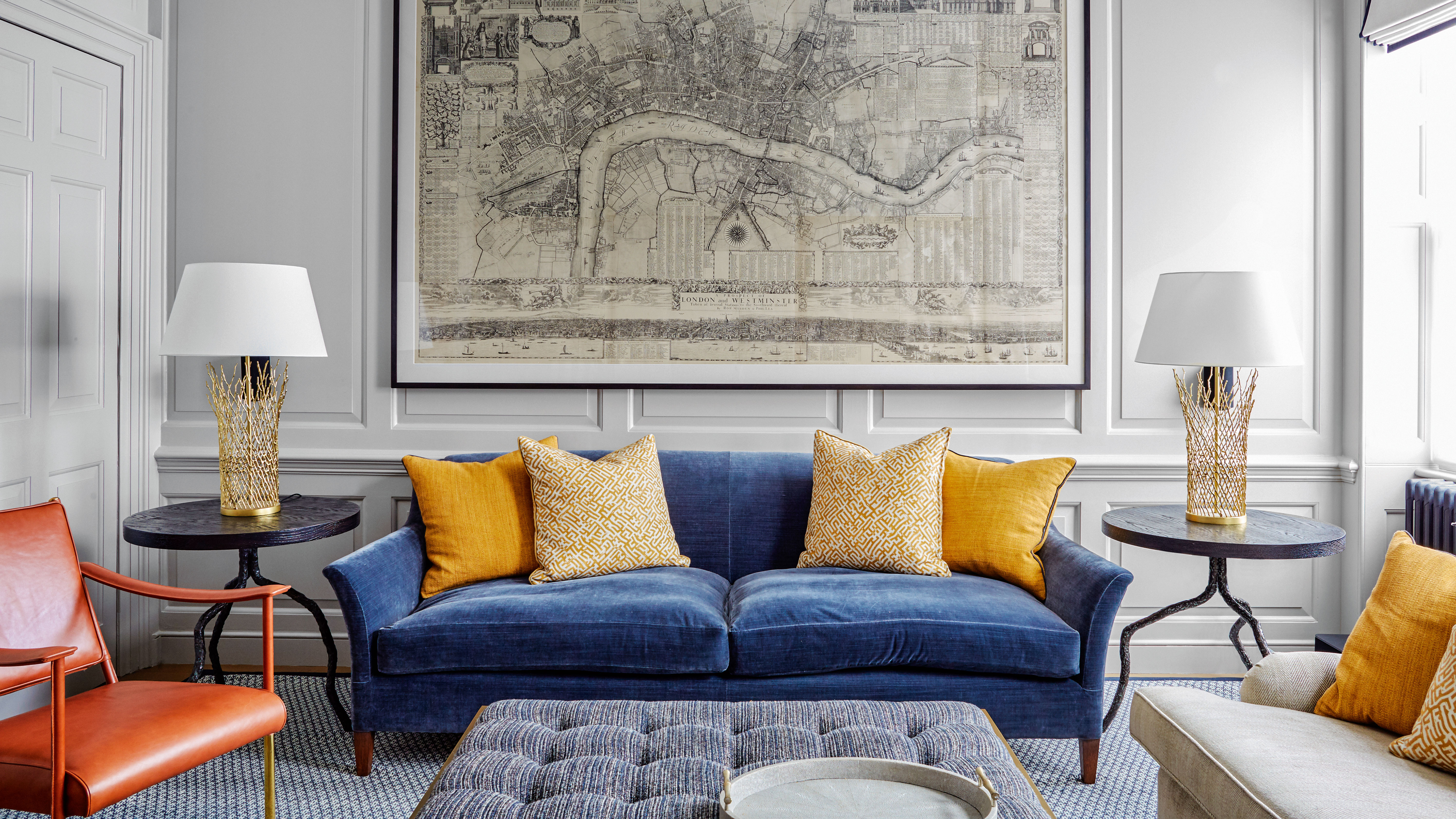

The focal point of every space, these living room seating ideas provide a comfortable retreat for weary feet, an indulgent vantage point for television viewing pleasure – and a relaxed hotspot for sociable sharing and informal entertaining.
Whether you’re on the lookout for a streamlined petite perch for your ‘cozy’ nook, or an uber-tactile, cosseting style with easy care appeal for your busy household, be inspired by our round-up of living room seating ideas to suit every style.
Once you're finished, be inspired by our favorite living room ideas and advice.
1. Create curves with your living room seating

Sculptural and curvaceous design is making a comeback, and it is about time, too. Versatile, curves work in any type of living room, traditional or contemporary. They make small rooms seem bigger and they can be incorporated in a variety of ways.
'Although linear seating and furniture continues to have strong appeal, there is a definite trend towards a softer approach in the styling of our homes, with curves being easier on the eye and more comfortable to live with,' explains Graeme Smith, conceptual designer with Metris. What's more, they can add both sensuality and ergonomics to a space, while also helping to maximize space.
- See: Small living room decor ideas – clever ways to plan and decorate a small space
2. Hark back to yesteryear with rattan and cane
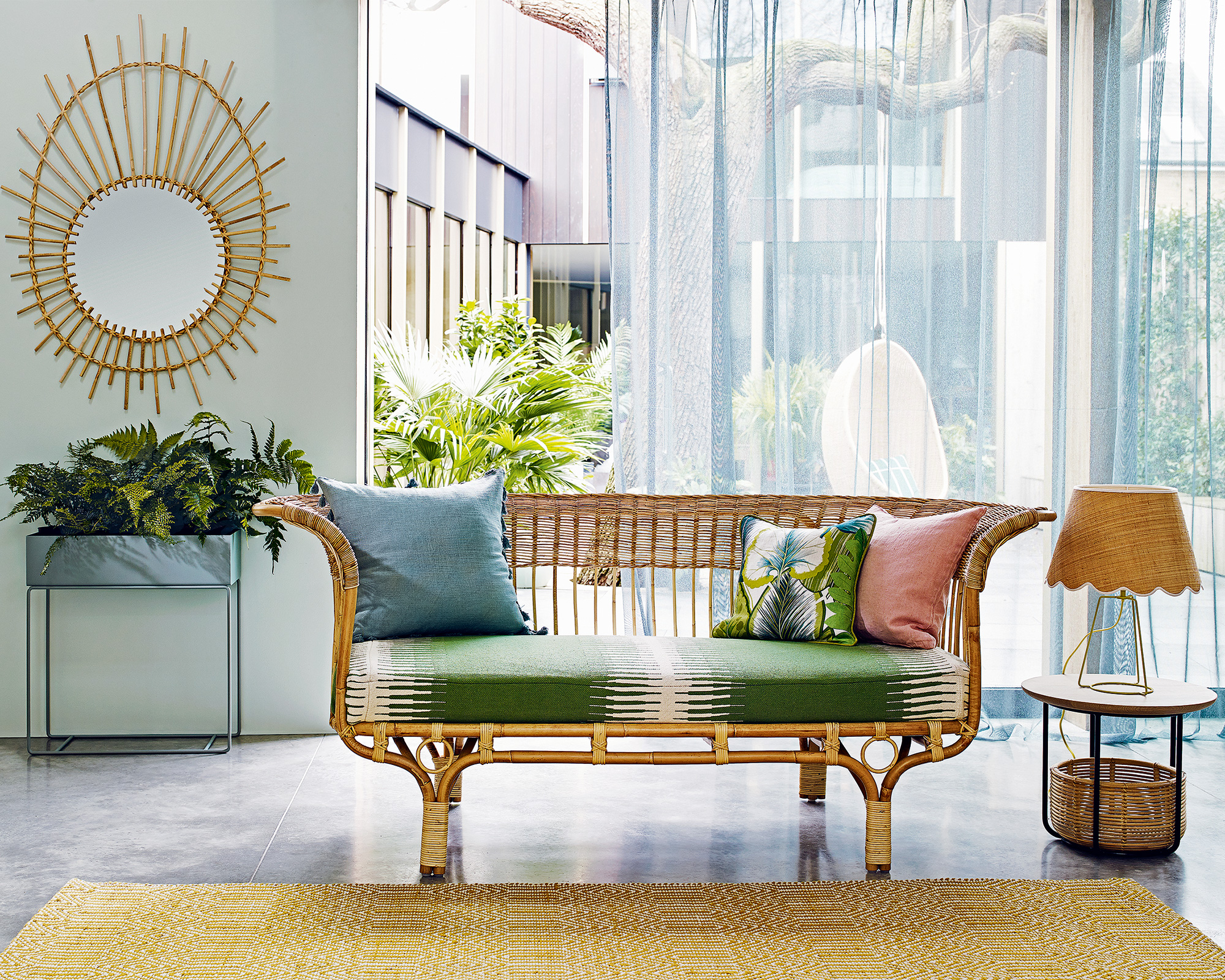
Rattan has been giving our homes a dose of rustic charm since its 1970s revival. This season’s homeware sees inspired combinations of textured rattan, tan leather and raw woods. Pair with spring pastels and earthy greens for a contemporary take on this retro trend.
3. Sing out with antique seats
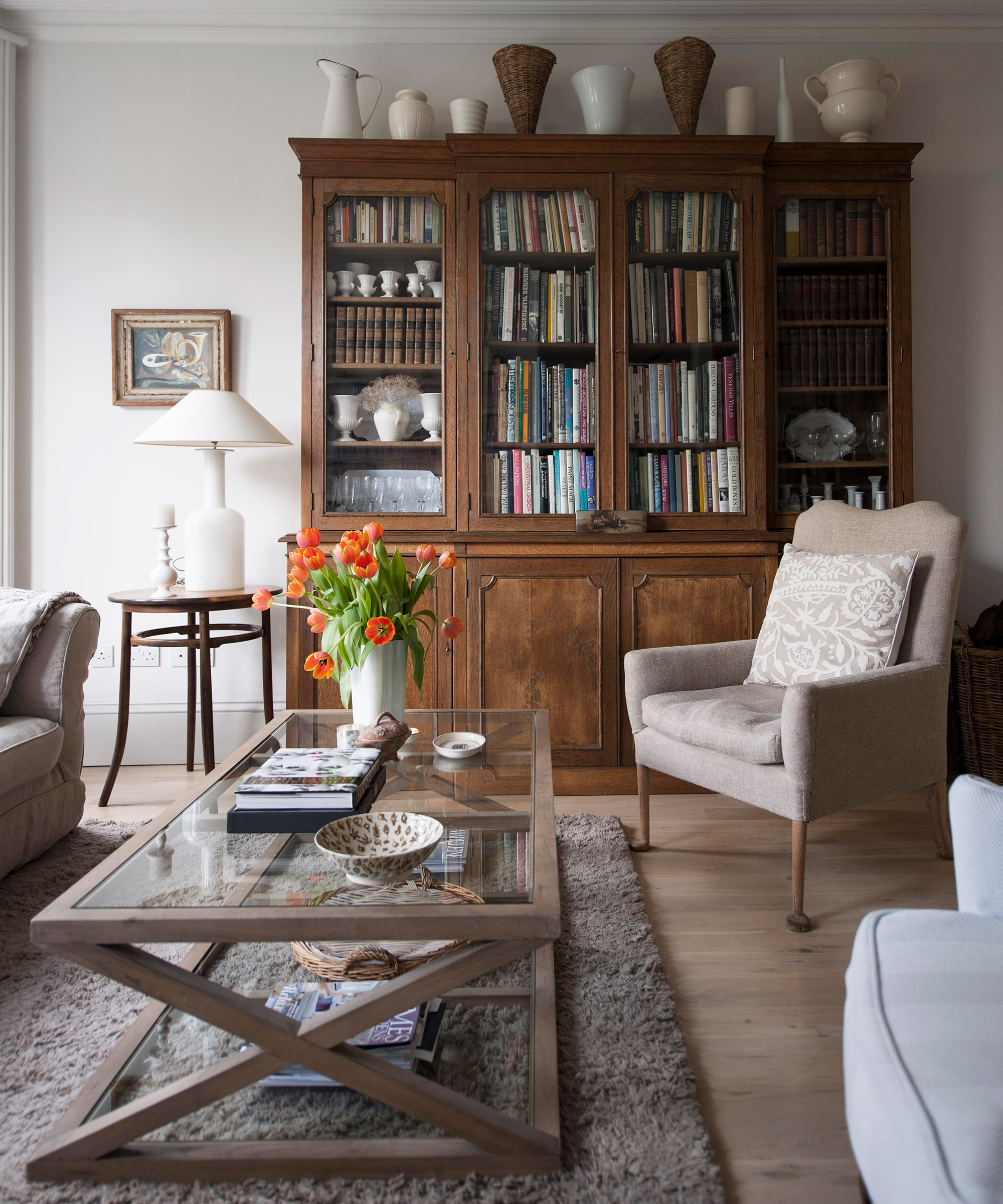
Decorating with antiques adds character, charm and elusive gravitas to a living room, and there is no better place to show off a strong antique collection than front and center.
Antiques have seen a surge in the past year – with many of us hoping to hark back to a simpler time. 'Connecting to the past with personal items that have a story to tell help to provide a sense of history and connection,' says interior designer Henriette von Stockhausen.
- See: Small living room ideas for apartments – to enhance the feeling of space
4. Work wonders with woven materials
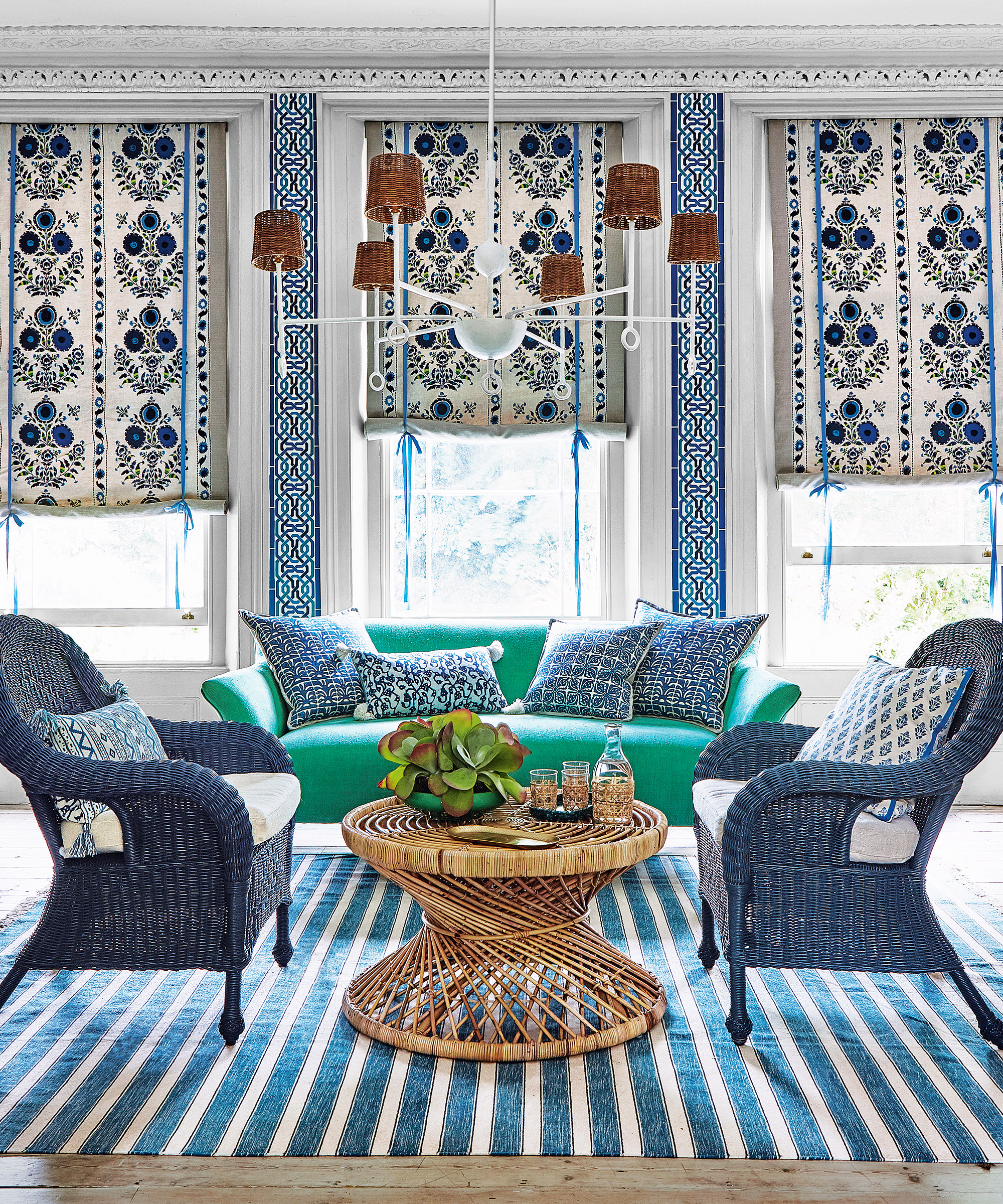
Once confined to the conservatory, woven and cane seating is now making its way into living rooms. The new requisite for furniture and textiles is that they bring texture to a scheme – sparking a revival in woven forms – with Seventies-inspired rattan seating taking center stage.
Take this look into the modern era with clashing color, pattern and texture for a scheme that is truly one-of-a-kind.
5. Pull living room seating away from the walls
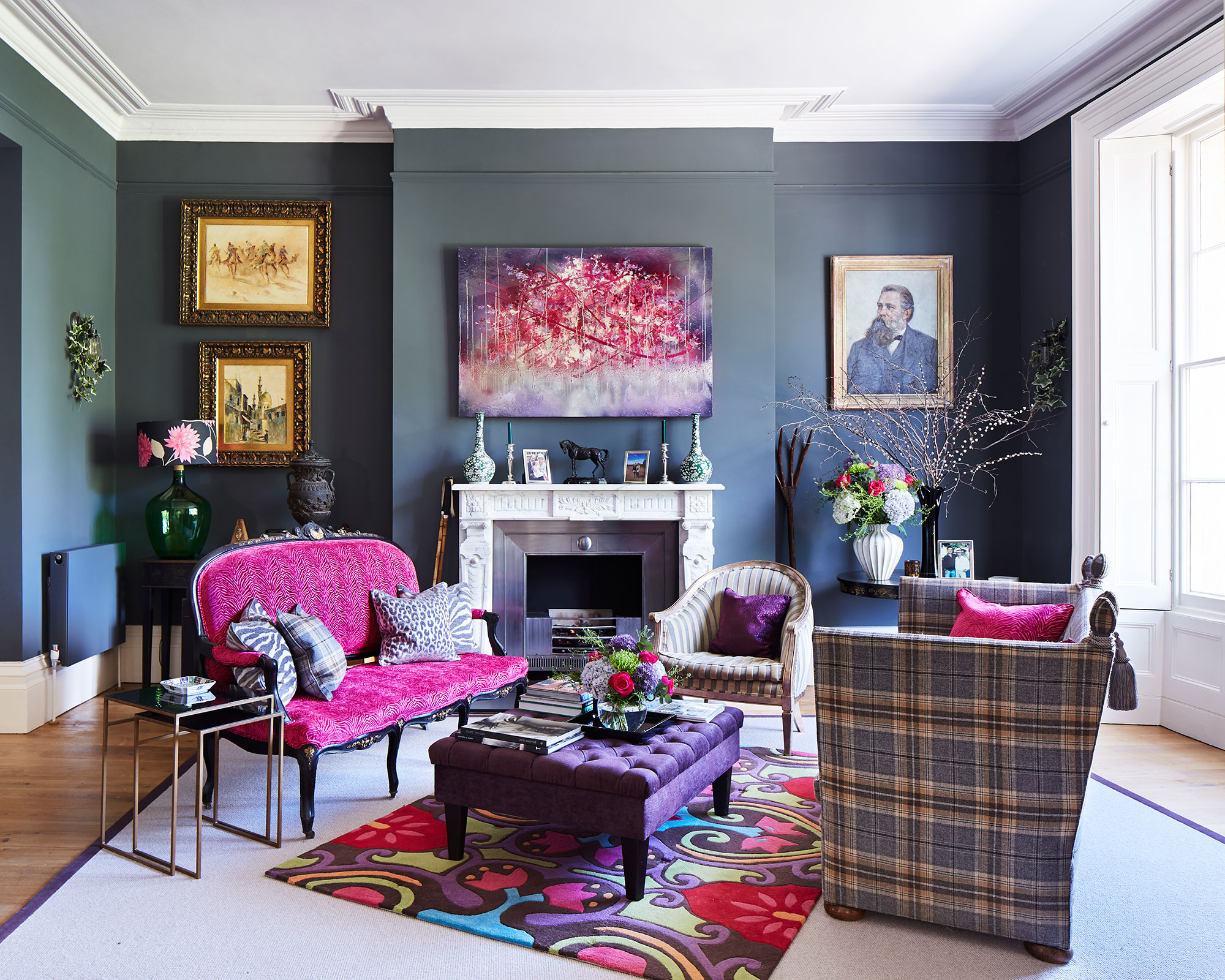
Select room seating that is in proportion to the size of your living room – oversized couches and chairs can make a small room feel narrow. Make sure you arrange your sofa and chairs at an angle to create a sense of depth to the room, as shown here, otherwise if you place all seating against the walls you might end up with a narrow 'bowling alley' look. This layout is great for intimate conversation, informal entertaining and small living rooms.
6. Create a focal point with seating

Design your scheme around a key feature. If your living room has no natural focal point – create one. Here, a pair of patterned chairs do the trick. Pull out one color from the chair fabric – and, use as the wall paint or curtain fabric – for a unified feel.
- See: Small living room storage ideas – clever ways to clear clutter in a compact space
7. Use symmetry to your advantage
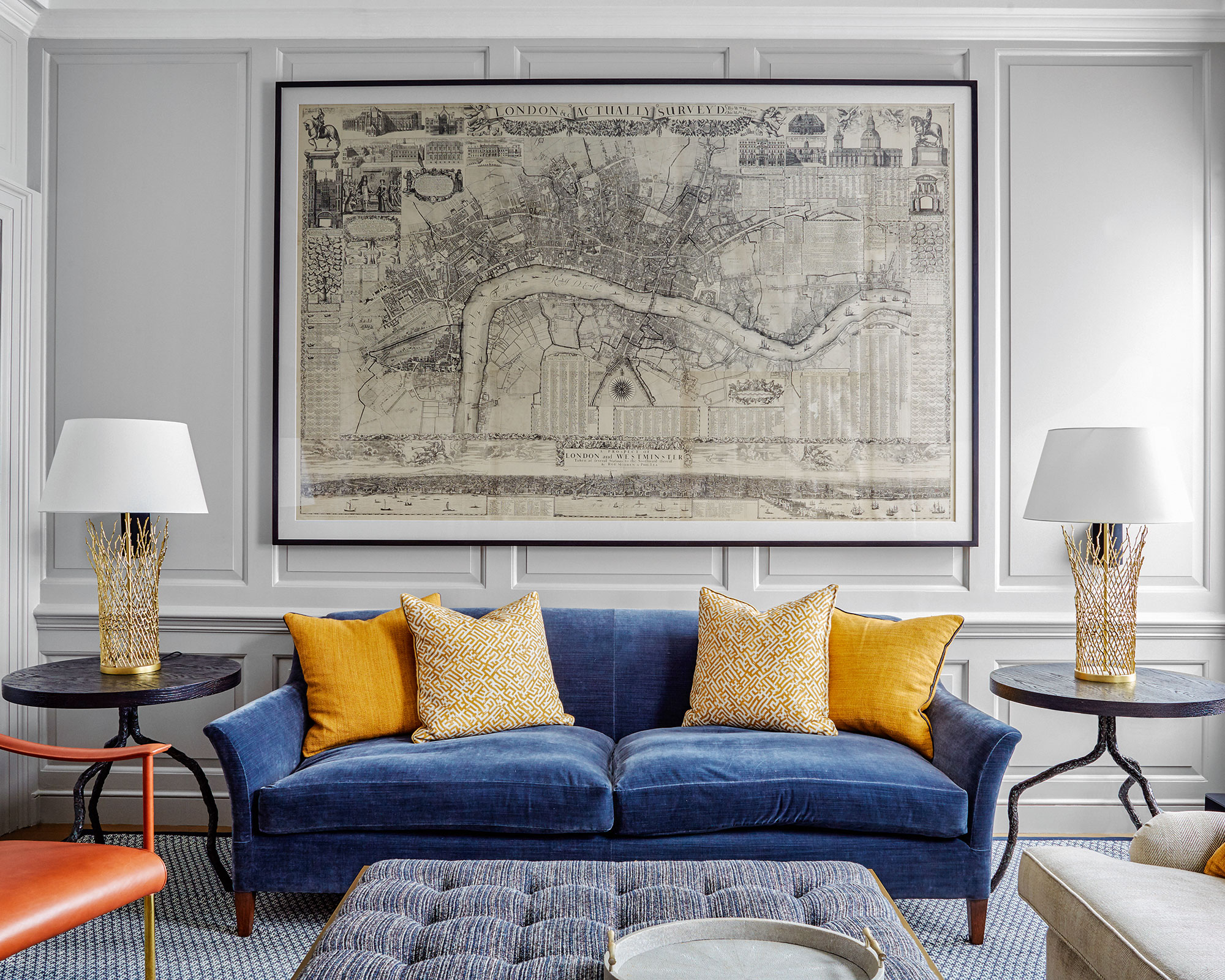
Symmetry in interior design is a must for a formal, put-together feel. Your living space should feel structured and balanced. Look for matching pairs such as armchairs and side tables for the living room.
8. Choose a good quality sofa
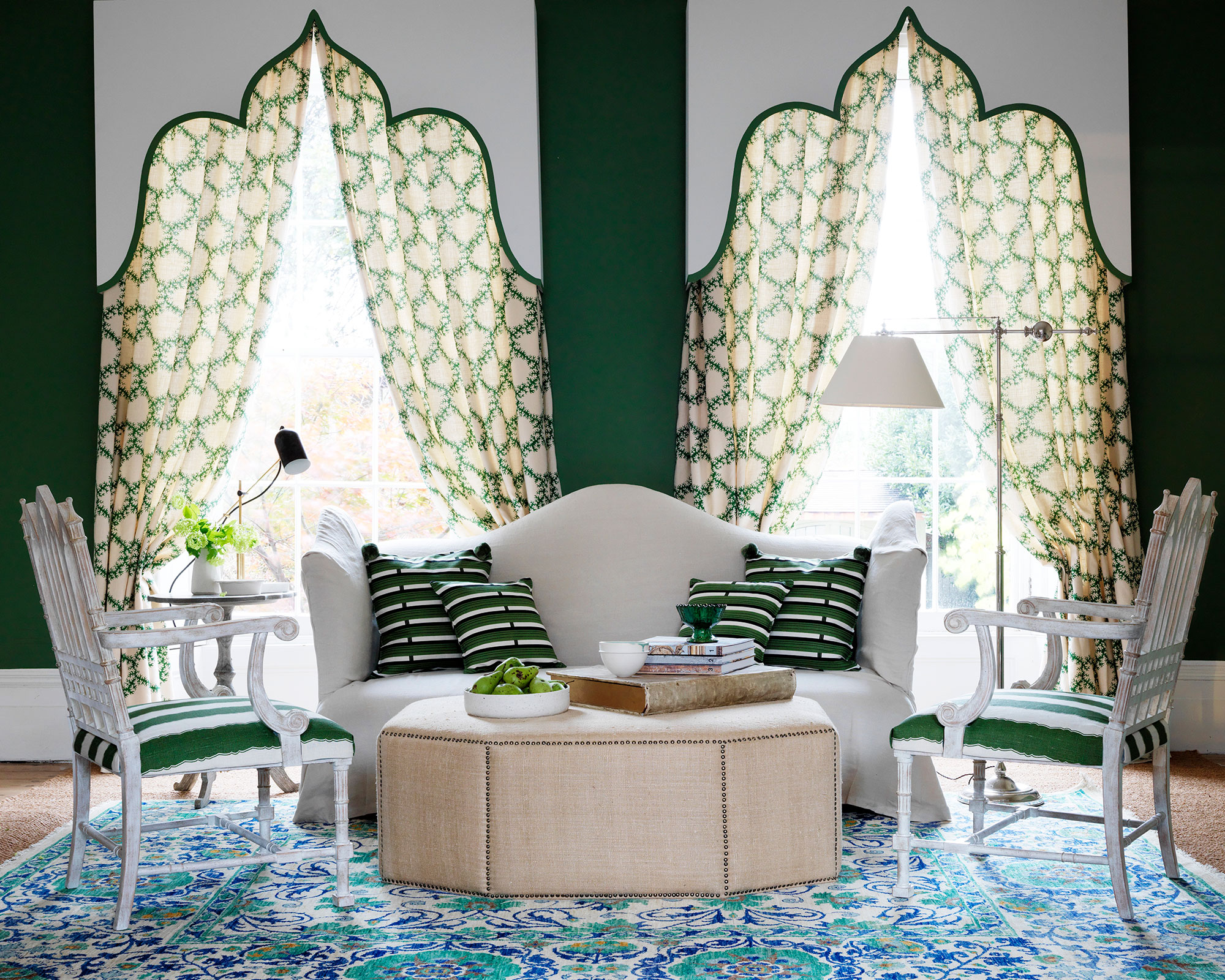
A living room needs to look smart and be comfortable – so don't hold back on choosing good quality sofas and armchairs, whether you have plenty of space to play with or need a couch for a small living room.
Add plenty of cushions but don't scatter them; make sure they are smartly positioned.
9. Add interest with exquisite fabric
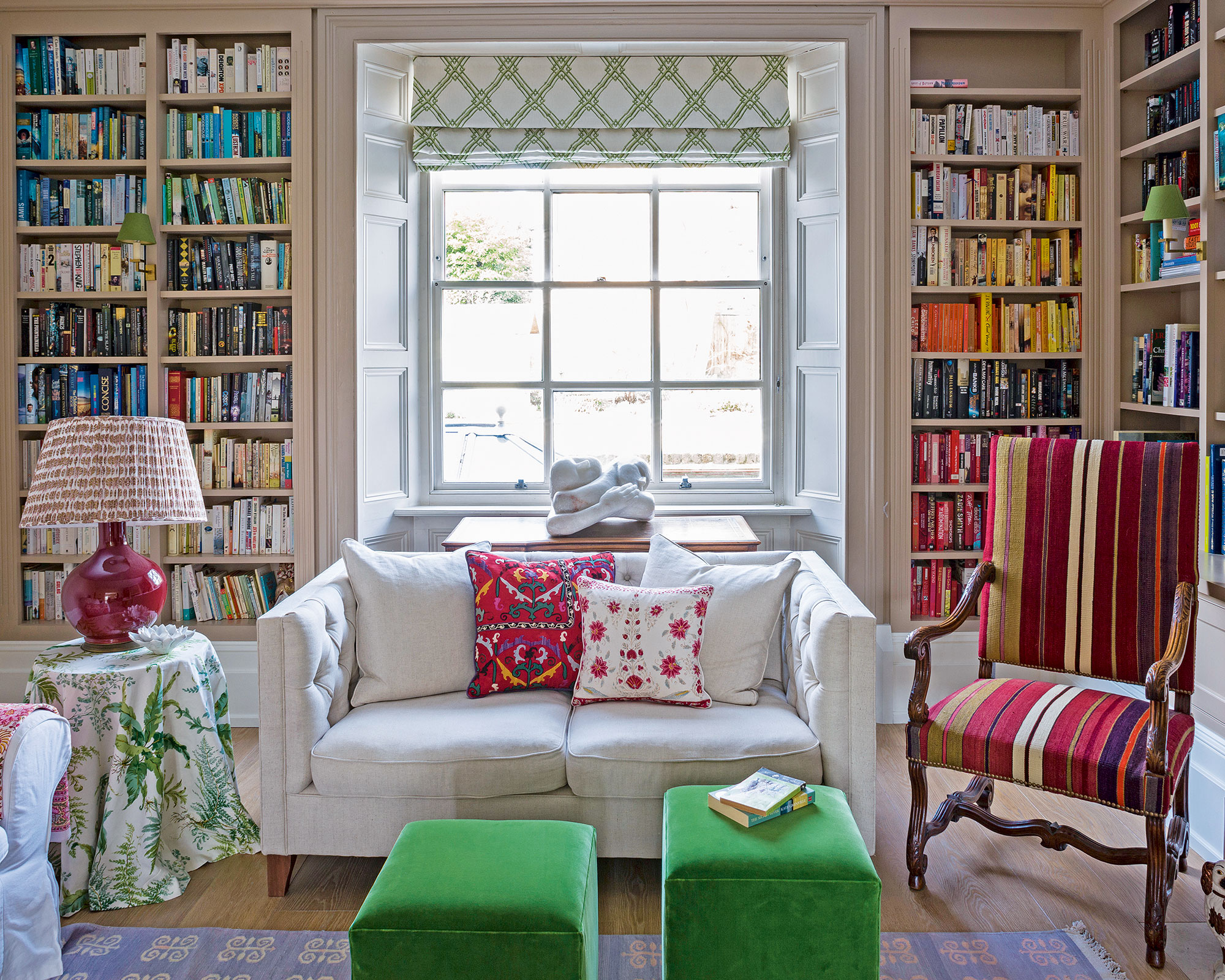
'Don't cover your sofas and armchairs in the same fabric,' says Emma Sims Hilditch, Creative Director, Neptune. Move away from formal, matching seating arrangements by mixing different shapes, colours and textures to add dynamic interest and character.
'Choosing a plain fabric for a sofa and stripes or a plaid for adjacent armchairs adds interest. If you have children or pets, it’s always worth scotch guarding new upholstery.'
10. Enhance the flow of conversation
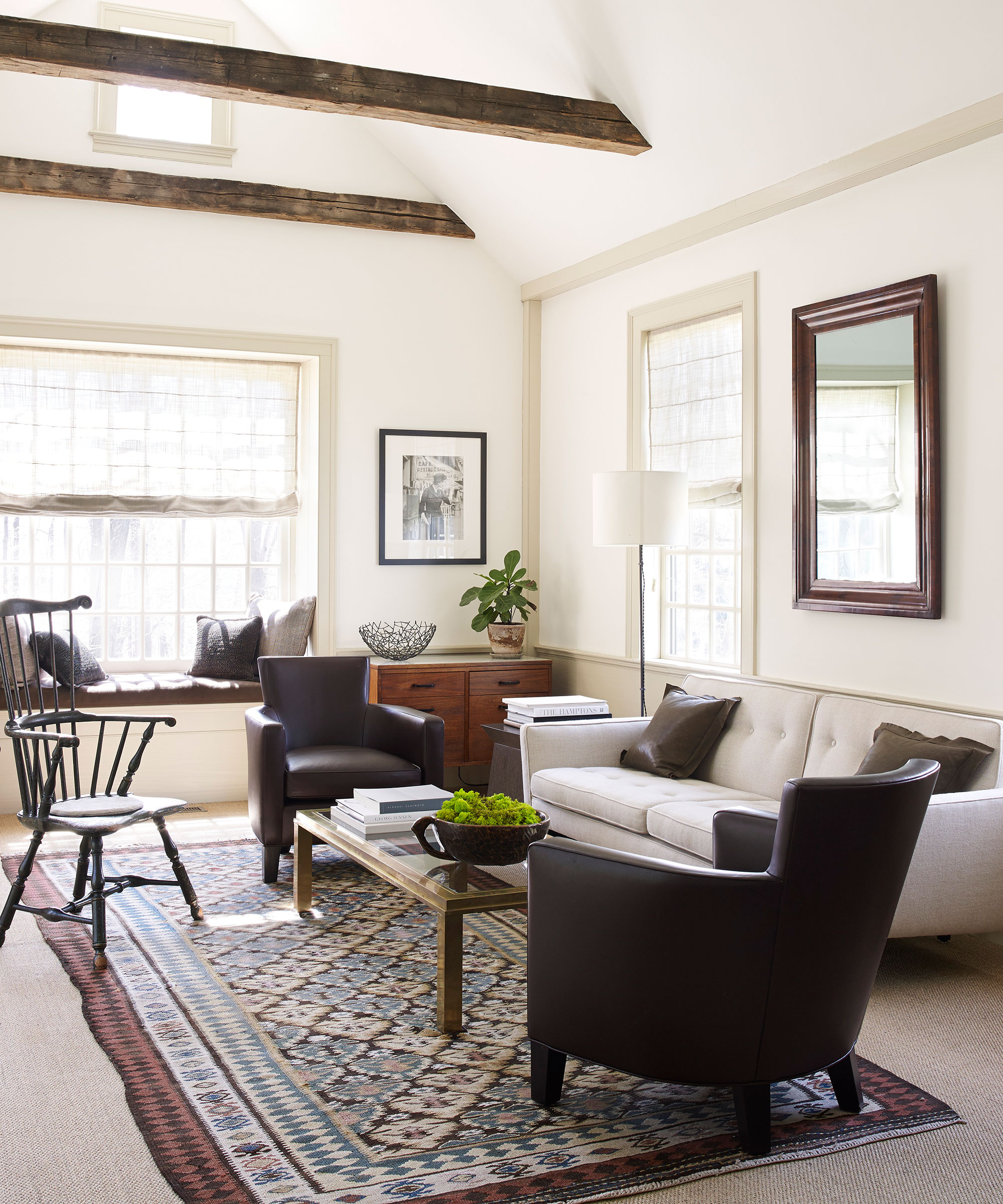
'Your floor plan should consider the room’s layout from a social and practical point of view,' says interior designer Nina Campbell.
'Plan seating in groups to ensure conversation flows when you have guests and consider scale and how different pieces will sit together. Seating heights vary so balance is key, but make sure guests are seated at the same level.'
How do I arrange my living room seating?
There are 5 simple rules to follow when arranging your living room seating. Just follow these expert-approved rules and you'll find that arranging living room seating is so much easier than you think:
1. Create intimate conversation areas
2. Pull furniture away from the walls
3. Consider the flow of traffic
4. Create a focal point with color, pattern and fabric
5. Keep tables within arm’s length
Where do you put seating in a living room?
Arranging seating in your living room can be a daunting task. When you're faced with an empty living room, filling it in a way that is both functional and beautiful can seem like an overwhelming task.
The first thing most interior design experts would recommend is that you keep seating, away from the walls. This is especially true in smaller rooms.
See: How much should I spend on a sofa? Price up the perfect sofa to last you a lifetime
If your living room is on the more compact side, then it is suggested that you invest in seating that is the same color as your walls. This will help to expand the space, at least to the eye. Choose upholstery in warm, nature-inspired tones to elevate energy levels and boost the mood in your space.
Another way to arrange your living room seating is to place them within arm's reach of a side or coffee table. Can you imagine having to get up every time you – or, your guest – wanted to reach the remote or sip their drink?
Sign up to the Homes & Gardens newsletter
Design expertise in your inbox – from inspiring decorating ideas and beautiful celebrity homes to practical gardening advice and shopping round-ups.

Jennifer is the Digital Editor at Homes & Gardens. Having worked in the interiors industry for several years in both the US and UK, spanning many publications, she now hones her digital prowess on the 'best interiors website' in the world. Multi-skilled, Jennifer has worked in PR and marketing and occasionally dabbles in the social media, commercial, and the e-commerce space. Over the years, she has written about every area of the home, from compiling houses designed by some of the best interior designers in the world to sourcing celebrity homes, reviewing appliances, and even writing a few news stories or two.
-
 Designers say these are the 10 kitchen cabinet details to know about if you want to elevate your space
Designers say these are the 10 kitchen cabinet details to know about if you want to elevate your spaceIt's all in the details – the designer touches that make all the difference to your kitchen cabinets
By Karen Darlow Published
-
 Garden experts warn against overcrowding flower beds – why this on-trend look is the worst thing you can do
Garden experts warn against overcrowding flower beds – why this on-trend look is the worst thing you can doIt's tempting to create an abundant, overflowing garden bed, but it can limit your plants in more ways than one
By Tenielle Jordison Published